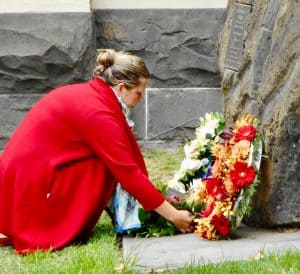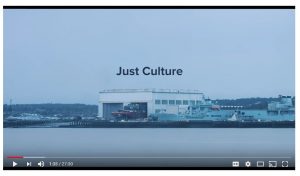 The Melbourne ceremony for International Workers Memorial Day was held on 27 April 2018 and had a good turnout. The standout “speaker” was Lana Cormie (pictured right), whose husband, Charlie Howkins in a trench collapse in March 2018, a work colleague died later in hospital from injuries from the incident. Victorian Trades Hall’s Luke Hilakari was fired up in his talk about the importance of occupational health and safety (OHS) and the need for Industrial Manslaughter laws.
The Melbourne ceremony for International Workers Memorial Day was held on 27 April 2018 and had a good turnout. The standout “speaker” was Lana Cormie (pictured right), whose husband, Charlie Howkins in a trench collapse in March 2018, a work colleague died later in hospital from injuries from the incident. Victorian Trades Hall’s Luke Hilakari was fired up in his talk about the importance of occupational health and safety (OHS) and the need for Industrial Manslaughter laws.
Cormie’s speech was read out by



 Australia’s Royal Commission into banking and financial services is a few months in and the evidence provided of wrongdoing is so substantial that those who were critical of the need for such an investigation are admitting they were wrong.
Australia’s Royal Commission into banking and financial services is a few months in and the evidence provided of wrongdoing is so substantial that those who were critical of the need for such an investigation are admitting they were wrong. I was born outside Liverpool England well over 50 years ago and have lived on the other side of the world ever since. I love hearing accents from Northern England as it reminds me of my relatives, my roots and, most of all, my Mother. This meant that I had to watch
I was born outside Liverpool England well over 50 years ago and have lived on the other side of the world ever since. I love hearing accents from Northern England as it reminds me of my relatives, my roots and, most of all, my Mother. This meant that I had to watch  The first lot of anonymous submissions to Australia’s
The first lot of anonymous submissions to Australia’s 